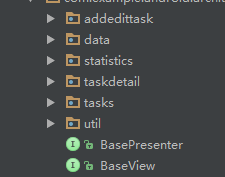英文原版下載地址:http://2013.hackitoergosum.org/presentations/Day1-05.Nifty%20stuff%20that%20you%20can%20still%20do%20with%20Android%20by%20Xavier%20Martin.pdf
一、Android DEX 動態加載技術
在Android開發過程中,開發者可以使用DexClassLoader動態加載另一個DEX文件。
API接口:
DexClassLoader(String dexPath, String optimizedDirectory, String libraryPath,ClassLoader parent)
缺點:需要DEX以文件形式明文存放在存儲設備上。
Android4.0版本增加了對內存中DEX數據的動態加載,這樣就克服了使用DexClassLoader時DEX以文件形式明文存放在存儲設備上的缺點,內存中DEX數據可以來源於解密後的文件或者網絡。這樣就增加了DEX數據的安全性。但是DexClassLoader並沒有暴露該種加載方式。開發者需要在JAVA層實現自己的Dex ClassLoader。
Android相關源代碼位置:
JAVA層源代碼:libcore\dalvik\src\main\java\dalvik\system\DexFile.java
/*
* Open a DEX file based on a {@code byte[]}. The value returned
* is a magic VM cookie. On failure, a RuntimeException is thrown.
*/
nativeprivatestaticint openDexFile(byte[] fileContents);
開發者可以通過反射調用DexFile實現自己的Dex ClassLoader,但是這種方式DEX數據在JAVA層,比較容易獲取,安全度比較低。
開發者可以通過JNI調用底層函數解析:
C++層源代碼:dalvik2\vm\native\dalvik_system_DexFile.cpp
const DalvikNativeMethod dvm_dalvik_system_DexFile[] = {
{ "openDexFile", "(Ljava/lang/String;Ljava/lang/String;I)I",Dalvik_dalvik_system_DexFile_openDexFile },
{ "openDexFile", "([B)I",Dalvik_dalvik_system_DexFile_openDexFile_bytearray },
{ "closeDexFile", "(I)V",Dalvik_dalvik_system_DexFile_closeDexFile },
{ "defineClass", "(Ljava/lang/String;Ljava/lang/ClassLoader;I)Ljava/lang/Class;",Dalvik_dalvik_system_DexFile_defineClass },
{ "getClassNameList", "(I)[Ljava/lang/String;",Dalvik_dalvik_system_DexFile_getClassNameList },
{ "isDexOptNeeded", "(Ljava/lang/String;)Z",Dalvik_dalvik_system_DexFile_isDexOptNeeded },
{ NULL, NULL, NULL },
};
第一步首先獲取Dalvik_dalvik_system_DexFile_openDexFile_bytearray方法指針:
JNINativeMethod *dvm_dalvik_system_DexFile;
void (*openDexFile)(const u4* args, JValue* pResult);
JNIEXPORT jint JNI_OnLoad(JavaVM* vm, void* reserved) {
void *ldvm = (void*)dlopen("libdvm.so", RTLD_LAZY);
dvm_dalvik_system_DexFile = (JNINativeMethod*)dlsym(ldvm, "dvm_dalvik_system_DexFile");
lookup(dvm_dalvik_system_DexFile, "dvm_dalvik_system_DexFile", "([B)I", &openDexFile)
}
int lookup (JNINativeMethod *table, const char *name, const char *sig, void (**fnPtrout)(u4 const *, union JValue *)) {
int i = 0;
while (table[i].name != NULL) {
if ( (strcmp(name, table[i].name) == 0) && (strcmp(sig, table[i].signature) == 0) ) {
*fnPtrout = table[i].fnPtr;
return 1;
}
i++;
}
return 0;
}
第二步調用Dalvik_dalvik_system_DexFile_openDexFile_bytearray方法解析Dex數據
ArrayObject *ao; // header+dex content
u4 args[] = { (u4)ao };
JValue pResult ;
jint result ;
openDexFile(args, &pResult);
result = (jint)pResult.l;
return result;
第三步實現JAVA層Dex ClassLoader完成類的加載:
int cookie = openDexFile(...);
Class<?> cls = null;
String as[] = getClassNameList(cookie);
for(int z=0; z<as.length; z++) {
if(as[z].equals("com.immunapp.hes2013.MainActivity")) {
cls=defineClass(as[z].replace('.', '/'), context.getClassLoader(), cookie );
} else {
defineClass(as[z].replace('.', '/'), context.getClassLoader(), cookie );
}
缺點:只能使用在Android4.0以上設備
二、自篡改Davlik字節碼(原理:http://blog.csdn.net/androidsecurity/article/details/8833710)
1、搜索內存查找DEX特征(dex\n035)
讀取\proc\self\maps文件獲取dex map地址
它將以_SC_PAGESIZE內存頁對齊, 相對Map開始地址偏移0x28
2、DEX格式解析(http://blog.csdn.net/androidsecurity/article/details/8664778)
3、找到代碼正確的位置
第一步定位到具體類,第二步定位到具體方法,獲取方法字節碼相對data section偏移量。
4、解鎖內存
mprotect((unsigned char*)aligned,PROT_WRITE | PROT_READ, len);
5、修改相應的代碼
memcpy((unsigned char*)code_off,opcodes, len);
文章鏈接:http://blog.csdn.net/jiazhijun/article/details/9674251
作者:Jack_Jia 郵箱:
[email protected]
 如何更高效的使用MVP以及官方MVP架構解析
如何更高效的使用MVP以及官方MVP架構解析
 android手把手教你開發launcher(一)
android手把手教你開發launcher(一)
 Android進階中級教程——1.1 Git的本地使用詳解
Android進階中級教程——1.1 Git的本地使用詳解
 加載頁面遮擋耗時操作任務頁面--第三方開源之AndroidProgressLayout
加載頁面遮擋耗時操作任務頁面--第三方開源之AndroidProgressLayout